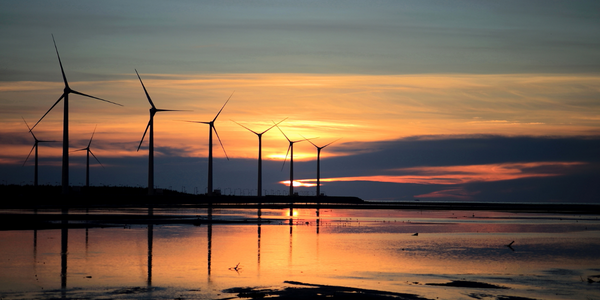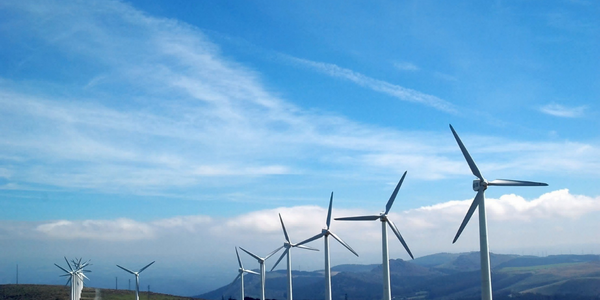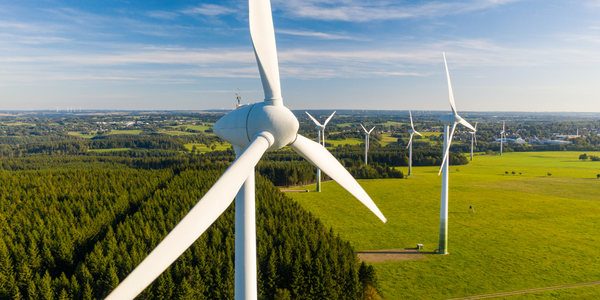Technology Category
- Analytics & Modeling - Big Data Analytics
- Platform as a Service (PaaS) - Application Development Platforms
Applicable Industries
- Cement
- Renewable Energy
Applicable Functions
- Product Research & Development
Use Cases
- Cybersecurity
- Smart Campus
Services
- Cybersecurity Services
- Data Science Services
About The Customer
Munich Re is a global reinsurance company that is part of a larger group, which also includes primary insurance entities. The company's core business involves managing large and complex risks, including natural catastrophes, satellite launches, and major building projects. Munich Re has been working with data for over a hundred years to understand risk. The company has a diverse range of teams working on different aspects of data analytics, including live data, weather data, and claims data. These teams are spread across various parts of the company and across the globe. The company also has a subsidiary in the U.S. that specializes in IoT and monitoring wind farms for other customers.
The Challenge
Munich Re, a global reinsurance company, was facing challenges in managing and utilizing its vast data resources. The company deals with complex risks, including natural catastrophes, satellite launches, and large building projects, which generate a significant amount of data. However, the company was struggling with data collaboration and transparency across its various departments and global locations. Different teams were working on similar data analytics projects without knowledge of each other's work. This lack of coordination and collaboration was hindering the company's ability to innovate and develop new products based on shared insights. Furthermore, the company was grappling with the challenge of efficiently managing its data lake, which contained thousands of data sources and tables. The difficulty lay in finding specific information and extracting it from the data lake.
The Solution
To address these challenges, Munich Re launched an innovative data platform in February 2017. This platform included a data lake and a data catalog, which served as the cornerstone for analytics. The platform enabled employees across the company to collaborate more efficiently, increasing transparency about ongoing projects and use cases. It also facilitated the combination of different data sources, leading to new insights and product ideas. The data catalog played a crucial role in managing the data lake. It provided a bird's-eye perspective on the raw data, understood the context from which the data originated, and identified the use cases executed with the data. This made it easier for users to navigate the content of the data lake. The platform also facilitated collaboration and knowledge sharing among the 2,000 employees using it. It allowed users to find not only the data but also the queries and insights that other users had discovered.
Operational Impact
Quantitative Benefit

Case Study missing?
Start adding your own!
Register with your work email and create a new case study profile for your business.
Related Case Studies.

Case Study
Remote Monitoring & Predictive Maintenance App for a Solar Energy System
The maintenance & tracking of various modules was an overhead for the customer due to the huge labor costs involved. Being an advanced solar solutions provider, they wanted to ensure early detection of issues and provide the best-in-class customer experience. Hence they wanted to automate the whole process.

Case Study
Vestas: Turning Climate into Capital with Big Data
Making wind a reliable source of energy depends greatly on the placement of the wind turbines used to produce electricity. Turbulence is a significant factor as it strains turbine components, making them more likely to fail. Vestas wanted to pinpoint the optimal location for wind turbines to maximize power generation and reduce energy costs.

Case Study
Siemens Wind Power
Wind provides clean, renewable energy. The core concept is simple: wind turbines spin blades to generate power. However, today's systems are anything but simple. Modern wind turbines have blades that sweep a 120 meter circle, cost more than 1 million dollars and generate multiple megawatts of power. Each turbine may include up to 1,000 sensors and actuators – integrating strain gages, bearing monitors and power conditioning technology. The turbine can control blade speed and power generation by altering the blade pitch and power extraction. Controlling the turbine is a sophisticated job requiring many cooperating processors closing high-speed loops and implementing intelligent monitoring and optimization algorithms. But the real challenge is integrating these turbines so that they work together. A wind farm may include hundreds of turbines. They are often installed in difficult-to-access locations at sea. The farm must implement a fundamentally and truly distributed control system. Like all power systems, the goal of the farm is to match generation to load. A farm with hundreds of turbines must optimize that load by balancing the loading and generation across a wide geography. Wind, of course, is dynamic. Almost every picture of a wind farm shows a calm sea and a setting sun. But things get challenging when a storm goes through the wind farm. In a storm, the control system must decide how to take energy out of gusts to generate constant power. It must intelligently balance load across many turbines. And a critical consideration is the loading and potential damage to a half-billion-dollar installed asset. This is no environment for a slow or undependable control system. Reliability and performance are crucial.

Case Study
System 800xA at Indian Cement Plants
Chettinad Cement recognized that further efficiencies could be achieved in its cement manufacturing process. It looked to investing in comprehensive operational and control technologies to manage and derive productivity and energy efficiency gains from the assets on Line 2, their second plant in India.

Case Study
Remote Monitoring and Control for a Windmill Generator
As concerns over global warming continue to grow, green technologies are becoming increasingly popular. Wind turbine companies provide an excellent alternative to burning fossil fuels by harnessing kinetic energy from the wind and converting it into electricity. A typical wind farm may include over 80 wind turbines so efficient and reliable networks to manage and control these installations are imperative. Each wind turbine includes a generator and a variety of serial components such as a water cooler, high voltage transformer, ultrasonic wind sensors, yaw gear, blade bearing, pitch cylinder, and hub controller. All of these components are controlled by a PLC and communicate with the ground host. Due to the total integration of these devices into an Ethernet network, one of our customers in the wind turbine industry needed a serial-to-Ethernet solution that can operate reliably for years without interruption.

Case Study
Temperature monitoring for vaccine fridges
Dulas wanted a way to improve the reliability of the cold chain, facilitating maintenance and ensuring fewer vaccines are spoiled. Dulas wanted an M2M solution which would enable them to record and report the temperature inside vaccine refrigerators.







